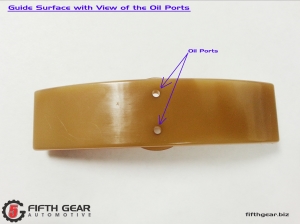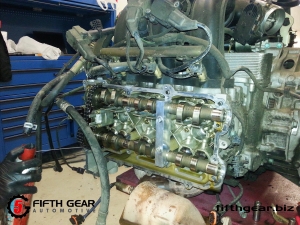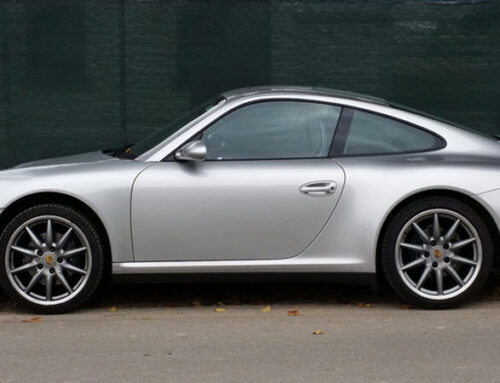First of all, allow me begin by saying ‘welcome’ to this very special edition of the Fifth Gear Blog (name subject to change for reasons that will become apparent). This particular blog entry is special for a couple of reasons, chief among them being that this is the very first blog that I, Bradley Hayes, has ever published, here or elsewhere.
In addition to being my first, this blog is made even more special (not that it needed to be) by the fact that it isn’t actually a blog. At least, not in the typical, conventional sense of the term. Rather, it is a compilation of posts from a 4-part series I wrote for Fifth Gear’s Google+ page (conveniently placed link: google.com/+FifthGearAutomotiveLewisville ), which I then (slightly)edited to read more like a single article, consolidating all the information in one, easily referenced place. So there you have it, not actually a blog. We’re breaking molds left and right; this is exciting stuff! So without further adieu, let’s get straight to it as we take a look into one of the larger issues plaguing some of the more popular Porsche models on the roads as they start to reach and surpass the decade-old mark…
endlessly documented that the early 5-chain engines used by Porsche in both the 996 generation
of the 911 and the Boxster have their share of weaknesses in
their design, resulting in concerns over the long-term reliability of these engines. Issues with the IMS (intermediate
shaft) bearing, for instance,
are so well-known that it has become common practice for owners to view the
“IMS bearing upgrade” as routine preventative maintenance and
proactively have it performed as a matter of course. It is much the same story with the water pump, air-oil separator, etc. We perform these replacement upgrades all the time, as does
any Porsche repair shop. There is, however, a far less commonly known weak
point in these engines that, left unaddressed, is causing some of these engines
to suffer premature catastrophic failure. It is also subtle enough that even once the failed engines
are disassembled and inspected to determine what brought about the failure, the actual root
cause in question is often overlooked or misdiagnosed time
and time again. On the occasions when the problem is caught in time, many
honest Porsche mechanics believe that the necessary course to fix it is a much
larger, costlier repair than it needs to be and may inadvertently, with the
best will in the world, be overcharging their customers. So what is it exactly
that’s killing so many of these engines? The answer is the “chain
guides”, or “wear
pads”, on the “VarioCam” timing
chain tensioners (pictured below).
More and more, we are discovering that the chain guides on the “timing chain tensioners” have been shown to be responsible for early engine failure, among other things, and could be considered a significant cause for concern with respect to the longevity and long-term reliability of these engines. In fact, we would posit that this issue is equally as significant as the other, more widely-known issues with these engines (such as with the IMS bearing), and therefore similarly worthy of being addressed by owners and prospective buyers. A two-minute Google search for “what to look for when buying a used 996 or Boxster”, for instance, will yield countless results advising the reader (correctly) to inquire if the “IMS upgrade” has been done and if not, how much you can reasonably expect to reduce the asking price by for needing to have it done yourself. Performing a similar search about the chain guides yields practically nothing, simply because the existence and severity of this problem has only recently begun to come to light. So, before we dive in any further, let’s establish which models, and more specifically which engines, this information applies to.
“Which Porsche engines are susceptible?”
The short answer is that all of the early VarioCam 5-chain flat-six engines came with the problematic chain guides, or wear pads, on the timing chain tensioners, but we can do a little better than that and break it down further…
Here are the specific Porsche models and engines that are affected:
Porsche 996 (model years 2001 and earlier) – 3.4 liter flat-six “M96” engine
Porsche Boxster/986 (model years 2004 and earlier) – 2.5 liter, 2.7 liter, and 3.2 liter ‘S’ flat-six engines
Now that we know which cars are affected, we’ll discuss exactly what we’ve seen that’s been happening with these chain guides and the havoc it could be wreaking inside your Porsche engine without you even knowing about it.
“How do timing chain guides wear?”
The timing chain tensioner works, more or less, by extending or retracting an arm, onto the end of which the chain guide is mounted.


Engine oil is used to lubricate the surface of
the guide and mitigate the friction of the chain as it is drawn over the
surface of the pad. Over time, though, the chain will cut and scrape material
from the surface of the guide and eventually wear it down. It’s important to
note that on these 5-chain motors, the chain guide is at the very
end of
the oiling circuit, so it is practically the last point in the engine to be
oiled when the engine is first started. What this means is that on all cold
starts, there is perhaps 1 – 2 seconds (assuming normal conditions throughout
the rest of the oiling circuit) when the chain is moving across the surface of
the guide with little to no lubrication, and it is in these few seconds during
start-up when a vast majority of the guide wear occurs. For this reason, the
driven mileage of the car plays a smaller role in contributing to this wear,
and the main reason we are beginning to see this issue more often now is simply
the age of these engines. Because of the nature of the original design and
material of the guides, all the material being removed from the surface by the
chain will accumulate in the oil screen on the pick-up tube in
the oil pan, eventually to the point that oil pressure is decreased, causing it
to take more time at start-up for oil to be circulated completely. Furthermore,
the debris even collects in the tiny oil ports that supply oil to the chain guides
themselves.
of wear is pretty startling…

Those chain guides in the photo above came out of a Boxster that was meticulously maintained, had fewer than 100,000 miles, and was exhibiting no apparent running problems, which raises a very good question and brings us neatly to the next segment…
“What are the signs and symptoms of chain tensioner guide wear?”
Unfortunately, there are no obvious or even specific symptoms that point directly to worn chain guides and consequently, they often go misdiagnosed. If they wear down far enough, you may see a check engine light come on due to the presence of DTC’s, or “diagnostic trouble codes” for “chain tensioner failure”. This is where many Porsche technicians will mistakenly recommend a far more costly tensioner replacement, even though the tensioner may be operating normally and only the guides themselves need to be replaced. Most of the time, the problem isn’t caught until something else is damaged by inadequate lubrication and then the blame is usually attributed to infrequent oil changes (or something along those lines), while the root cause of the oiling problem goes overlooked.
“How to prevent timing chain tensioner guide wear?”
Now first and foremost, the best long-term approach to warding off some of the most damaging effects of chain guide wear is actually very simple, and it’s something you hear mechanics and every online auto maintenance resource say time and time again. Keep up with your oil changes! There’s a reason it’s said so often, folks! Regular, high-quality oil and filter changes really are that important. Specifically in regards to this issue, using high-quality synthetic oil(Porsche recommends Mobil 1 for these cars) and changing it often will help prevent the accumulation of material that’s been worn from the chain guides in all those small, but critical oil passages in your engine. Newer oil that hasn’t been in use long enough to break down will keep the guides lubricated longer after the engine has been shut off, which will help to mitigate the damage from friction during those first few moments at start-up.
the chain guides in your engine are worn to the point of needing attention is
to have your engine inspected by a qualified “Porsche specialist”. As
these cars are all getting to be 10 years old or older, we highly recommend
this anyway.
Case-in-point:
We had a new customer bring his Boxster in after reading about the IMS upgrade that needed to be performed. While discussing that repair, we brought up this information about the timing chain tensioners and suggested that it would be a good time to look at those, as well.
guide material distributed so thoroughly throughout the engine, we doubt it
would have lasted another 10 or 15k miles. Keep in mind, this
is also without a single symptom or drivability problem reported by the
customer, or any DTC’s recorded in the car’s on-board computer.
After we finished the repairs, our customer reported back that his beloved Porsche ran like it did when it was a brand-new car. How is this possible, when he didn’t report it feeling down on performance to begin with? You see, the change in how it runs is so gradual that, day-to-day over the course of 10 years, it is completely imperceptible. But once it’s cleaned out and the repair is made, the difference can be pretty significant.
Thanks for reading and following along with us! Add us on our Google+ page and Like us on Facebook and Instagram for lots more interesting info, photos, and more! We even have a budding YouTube channel! Like I said, breaking molds left and right. Until next time, uh… check your oil frequently.
(I’ll work on the sign-off…)















